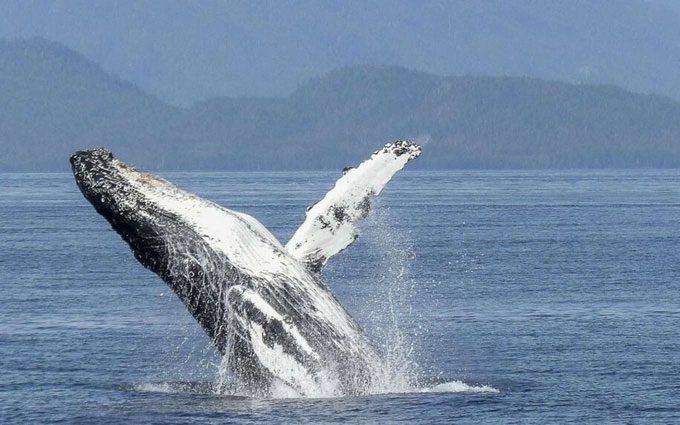Humpback Whales Share Songs During Migration.
A group of researchers has revealed that humpback whales can share culture through “songs” across the South Pacific during their migration.

Humpback whales can share songs from different regions during migration. (Photo: Pixabay).
For a long time, whale songs have been recognized by scientists as a part of the culture of this species. A study from the University of St Andrews in Scotland and the University of San Francisco in Ecuador found that the songs of humpback whales in the Pacific region (near Australia) are imitated by whales near the equator.
This discovery of cultural sharing may help scientists understand the basic mechanisms of song learning and the development of communication among whale species.
Humpback whales are marine mammals that can grow to about 15 meters in length and weigh up to 30 tons. They are a focus of scientific study due to the complexity and annual changes in their songs.
In the summer, they feed in areas near the poles of the Earth and then migrate in the winter to temperate regions for breeding.
According to researchers, male humpback whales typically sing in a repetitive, structured manner, while females use shorter, less complex songs, which serve as their means of communication.
Specifically, the songs of these whales are organized within a hierarchical system. At the first level, each sound (referred to as a “unit”) combines to form a sequence of units called a “phrase.”
The “phrases” are repeated to create a “theme,” which the species sings in a specific order, resulting in a song that lasts from 5 to 30 minutes, while a humpback whale’s song can last for several hours.
To date, these songs are still being studied by scientists, who have observed that they continue to evolve annually among humpback whales.
The significance of these songs remains a topic of debate within the scientific community. Some experts believe they play an important role in male-female reproduction, while others argue that they serve as a language for cultural communication among the whales.
Whales Share Culture Across the South Pacific
Some suggest that a location in the southwestern South Pacific, the Kermadec Islands of New Zealand, serves as a stopover for humpback whales from various populations during their southward migration.
Scientists have found similarities in the song themes of this species at the Kermadec Islands with a population in Polynesia, France. This indicates the potential for cultural transmission between populations in this area.
Dr. Ellen Garland from the University of St Andrews, a member of the research team, stated in a release: “Male humpback whales perform complex and culturally rich songs. Our research shows that the migratory patterns of humpback whales seem to be encoded in their songs.”
“The team found similarities between the songs of humpback whales at the Kermadec Islands and some of the places where these whales reside during the winter in temperate regions,” Garland added.

Image showing three song themes shared by humpback whales from two populations from Polynesia, France (FP) and Ecuador (EC) (Photo: Garland).
During the study, scientists recorded the songs of this whale species from 2016 to 2018 at various locations across the Pacific.
After analyzing the measurements, the research team discovered that a population in Polynesia (France) and a group near the equator shared song themes. This suggests that humpback whales have close connections across the Pacific.
This research helps expand our understanding of the extent of cultural transmission among humpback whale populations in the South Pacific and sheds light on their song-learning mechanisms.
Scientists believe that understanding this cultural phenomenon will provide valuable insights into the evolution of complex communication, including language and culture in this species.


















































